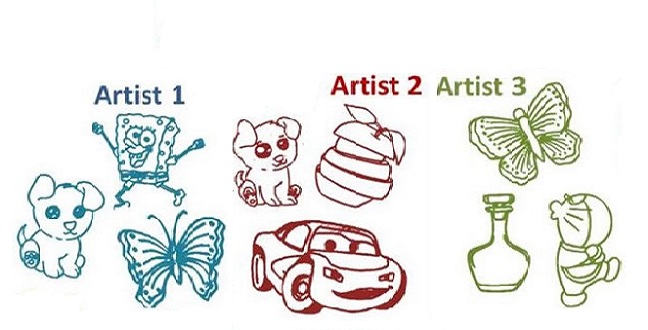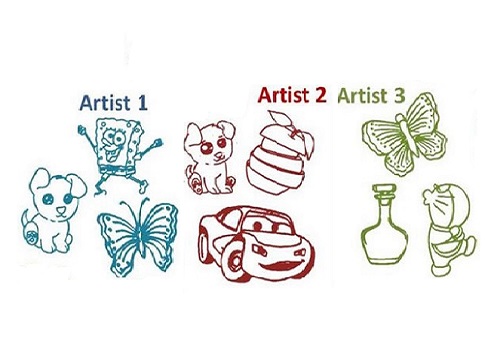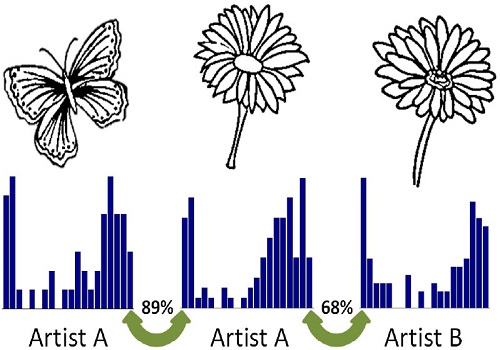Electrical Engineering
A picture of the artist captured in a stroke
A graphics technique is the first to identify people based on their sketching style.


Sketches by three of the 10 artists commissioned for the study.
© 2016 KAUST

SAR detects artistic style and is not significantly affected by sketch content.
© 2016 KAUST
A novel method can break down sketches into individual strokes and mathematically calculate the frequency of each kind of stroke to identify the sketch’s author. Called stroke authorship recognition (SAR), the technique could prove useful in detecting fraudulent artwork and in assessing the progress of artists-in-training.
KAUST researchers used a widely available graphics design software tool to decompose sketches into strokes to form a “dictionary” of basic strokes1. Their method takes a sketch, decomposes it to strokes and then identifies the frequency with which various strokes from the dictionary are used. The various frequencies are depicted in a histogram. Because artists use different types of strokes with different frequencies, each histogram is unique to a specific artist.
The team commissioned sketches by 10 professional artists specifically for the study. They also asked nine of the artists to imitate the sketches of the tenth to simulate sketch fraud.
In an online survey, 2,000 participants were shown some of the sketches and told to whom each belonged. Then they were shown an additional sketch and asked to identify which artist drew it. Answers chosen completely at random give an average accuracy of 10 percent. The survey respondents were able to recognize the correct sketch author with an average accuracy of 29 percent. SAR was able to identify the correct artist with an accuracy of 56 percent.
SAR also did much better than 25 experienced artists in recognizing fraudulent from original sketches.
“The results show that SAR can significantly outperform humans in discriminating sketch style and detecting fraudulent sketches,” stated Bernard Ghanem from the University’s Visual Computing Center.
In addition to detecting art fraud, the method could also be used to assess the progress of artists-in-training. Artists working in large corporations like the Walt Disney Company are often trained to emulate a specific drawing style. SAR could help trainers assess how well trainees are progressing in emulating the desired drawing style.
The team has made SAR’s code openly available to encourage further research they say is needed to improve the method’s accuracy. The team next aims to analyze how artists generate strokes by tracking their hand movements while sketching.
“We believe this will provide us with more information about an artist’s sketching style,” Ghanem said.
References
- Shaheen, S., Rockwood, A., Ghanem, B. SAR: Stroke authorship recognition. Computer Graphics Forum (2015) doi:10.1111/cgf.12733.| article
You might also like

Bioengineering
Smart patch detects allergies before symptoms strike

Computer Science
Green quantum computing takes to the skies

Electrical Engineering
Micro-LEDs boost random number generation

Bioengineering
Sensing stress to keep plants safe

Computer Science
Sweat-sniffing sensor could make workouts smarter

Electrical Engineering
New tech detects dehydration by touching a screen

Electrical Engineering
A new interface for efficient electronics

Electrical Engineering



